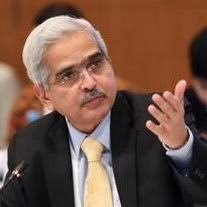 The Monetary Policy Committee of the Reserve Bank of India has decided to maintain status quo and kept its rates unchanged at 4% for the sixth time. The Committee also decided to continue with the accommodative stance as long as necessary to revive and sustain growth on a durable basis and continue to mitigate the impact of covid on the economy, while ensuring that inflation remains within the target going forward. RBI Governor Shaktikanta Das said this comes amid economic impact due to the second wave of coronavirus cases, expectation of a normal monsoon, ability of businesses to adapt to pandemic working and need to maintain adequate liquidity in the economy. The Governor also said though the GDP growth in FY21 contracted to 7.3%, the forecast of a normal south-west monsoon, the resilience of agriculture and the farm economy, the adoption of covid compatible operational models by businesses, and the gathering momentum of global recovery are forces that can provide tailwinds to revival of domestic economic activity when the second wave abates.
The Monetary Policy Committee of the Reserve Bank of India has decided to maintain status quo and kept its rates unchanged at 4% for the sixth time. The Committee also decided to continue with the accommodative stance as long as necessary to revive and sustain growth on a durable basis and continue to mitigate the impact of covid on the economy, while ensuring that inflation remains within the target going forward. RBI Governor Shaktikanta Das said this comes amid economic impact due to the second wave of coronavirus cases, expectation of a normal monsoon, ability of businesses to adapt to pandemic working and need to maintain adequate liquidity in the economy. The Governor also said though the GDP growth in FY21 contracted to 7.3%, the forecast of a normal south-west monsoon, the resilience of agriculture and the farm economy, the adoption of covid compatible operational models by businesses, and the gathering momentum of global recovery are forces that can provide tailwinds to revival of domestic economic activity when the second wave abates.
Support of ₹150 bn for hotels, travel & tourism
To mitigate the impact of the second wave of the pandemic on certain contact-intensive sectors, RBI has opened a liquidity window of ₹150 billion till 31 March 2022 up to 3 years at the repo rate. The Governor said banks can provide lending to hotels-restaurants, travel agents, tour operators, aviation ancillary services, private bus operators, car repair services, rent-a-car providers, event/ organizers, beauty parlours/saloons. Banks can park their surplus liquidity up to the size of the loan book created under this scheme with the RBI at a rate 25 bps lower than the repo rate.
₹160 bn extended to SIDBI to support MSMEs
To further support smaller MSMEs and other businesses, RBI decided to extend a special liquidity facility of ₹160 billion to SIDBI for on-lending/ refinancing through novel models and structures, at the prevailing policy repo rate for a period of up to one year. The coverage of borrowers under Resolution Framework 2.0 will be expanded by enhancing the maximum aggregate exposure threshold from ₹250 million to ₹500 million for MSMEs, non-MSME small businesses and loans to individuals.
RRBs permitted to issue CDs
To provide greater flexibility in raising short term funds by regional rural banks (RRBs), the central bank has now decided to permit them to issue Certificates of Deposits. All issuers of CDs will be permitted to buy back their CDs before maturity, subject to certain conditions.
Purchase of G-Secs of ₹400 bn, G-SAP 2.0 planned
During the current year so far, the RBI has injected additional liquidity to the tune of ₹365.45 billion (up to 31 May) in addition to ₹600 billion under G-SAP 1.0. It has now been decided that another operation under G-SAP 1.0 for purchase of G-Secs of ₹400 billion will be conducted on 17 June 2021. Of this, ₹100 billion would constitute purchase of state development loans. Also, G-SAP 2.0 in Q2:2021-22 and secondary market purchase operations of ₹1.20 trillion will be undertaken to support the market. With a view to easing operational constraints faced by FPIs and promoting ease of doing business, authorized dealer banks will be permitted to place margins on behalf of their FPI clients for their transactions in government securities (including state development loans and treasury bills), within the credit risk management framework of banks.







